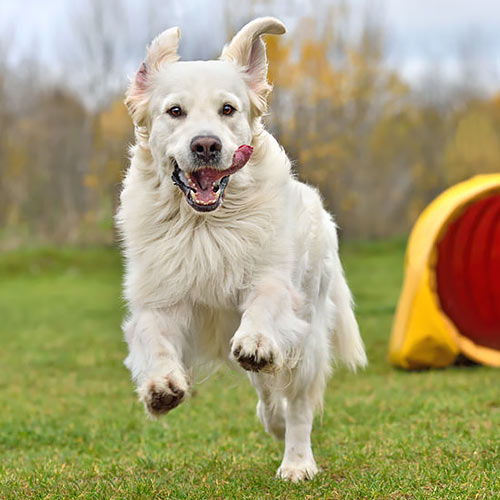Timidity, shyness, and outright fear is a common malady in dogs. It’s not their fault; they either have poor genetics, have been abused, or have been improperly socialized (all human-caused problems).
Dogs are commonly scared of men (they are seldom fearful of women), slippery floors, children, other dogs, crates, different ethnic groups, grabbing a collar, being on a leash, riding in vehicles, thunderstorms, gunfire, veterinarians, groomers, and many other things as well. Socialization around these items and people will tend to help the dog/pup realize that these things are normal, especially if the socialization is done as a puppy. Positive exposure towards as many things as possible is ideal when raising a puppy. The emphasis is the positive exposure.
Fear bites are the most common cause of dog bites – towards humans or other dogs. If these kinds of bites were eliminated (almost an impossibility) dog bites would almost be eliminated. Any dog who is pushed far enough will react aggressively. The negative part of this is that fearful dogs do not need to be pushed far at all in order to respond aggressively. Their threshold is much closer to the surface. They may be pushed over the edge by a toddler pulling an ear, a male friend walking through the door of the home, or an approaching thunderstorm.
Fear seems to be a dominant trait in genetics as it shows up so easily. Some breeds are more prone to fearfulness than others. Parents who are shy will pass this trait on their prodigy. Even confident parents will produce timid pups sometime during their breeding career.
Fear Aggression
The definition of fear aggression is a dog who bites, snaps, growls out of fear. Other types of aggression may also display these same behaviors how a fear aggressive dog displays these behaviors because he/she is afraid. He/she may show teeth, exhibit submissive urination/defecation, tuck their tail, or simply shake and tremble.

Because fear is such a dominant trait, fear aggression is the most preventable of all the different types of aggression. Cease breeding fearful dogs and fear and phobias all but disappear. If a dog is not fearful, it will not be fear aggressive.
Fear aggressive dogs would not survive in an undomesticated pack. They would shut down on the hunt – out of fear – viewed as a threat/liability to the well-being of the pack, and killed by the remainder of the pack. Fortunately, the human pack is more forgiving ????
Fear aggression is a learned behavior. It is not hormone related; it shows up equally in males and females. The silver lining in this canine cloud is that a learned behavior can be unlearned or counter-conditioned.
Fear aggression is easy to fix but it takes a long time…sometimes taking several months. The dog’s predictions must be changed. For example if he predicts bad things when his collar is grabbed, his prediction must be changed to expecting positive things when his collar is grabbed. He used to be hit and thrown roughly into the crate. Now he has learned that treats are coming or a walk in is the near forecast when his collar is “grabbed.” His predictions have been changed. It is beautiful to see this transformation.
Counter-conditioning must include sending a clear message to the dog. Do not encourage fearful behavior. For example, when a dog is growling and trembling at the vet’s office, do not make the mistake of telling her “it’s okay.” The dog thinks you are telling her it is ok to act this way and that this behavior is totally acceptable. Instead, only say such things when she is calm and not growling. After all, this is the behavior that you are trying to condition the dog to exhibit.
How to Avoid Fear Aggression
There are two options.
The first and safest option is to avoid choosing a dog who is shy. Choosing a pup from shy parents should also be avoided. [This would eventually force breeders to do a better job in selecting their breeding stock…or go out of business.] Many people feel sorry for the “little guy” trembling in the corner of the kennel and do not realize the implications of choosing such a pup.
The second option is to do a very good job of socializing pups/dogs. This helps them to learn what is normal and acceptable. Keep in mind, though, that socialization will not overrule the dog’s genetic hard-wiring; i.e. he/she may always be fearful in spite of your good socializing efforts.
Success Stories
Across the years we’ve seen some amazing recoveries from fearful dogs. There’s the bulldog who couldn’t be taken to the vet without a muzzle who learned to react calmly and even accept vaccines from the vet – without the muzzle. There’s the fear-biter Malinois who was very afraid of men that eventually learned to be greeted by male strangers without the growl and bite. Or the Great Dane who believed it was best to stuff her mouth with her caregiver’s forearm as payment for walking into her kennel. After changing her predictions, others could walk into her kennel without being anxious about the health of their body parts. It’s truly amazing to watch this turnaround. It takes a lot of time and patience – and sometimes bandages/stitches – but the transformation is worth it.
The best option is to avoid a fearful, timid dog. But – for many dogs – it’s too late for that option. Thy’re already fearful. They need solid, positive, trusting counter-conditioning. For these dogs, the future is bright.

